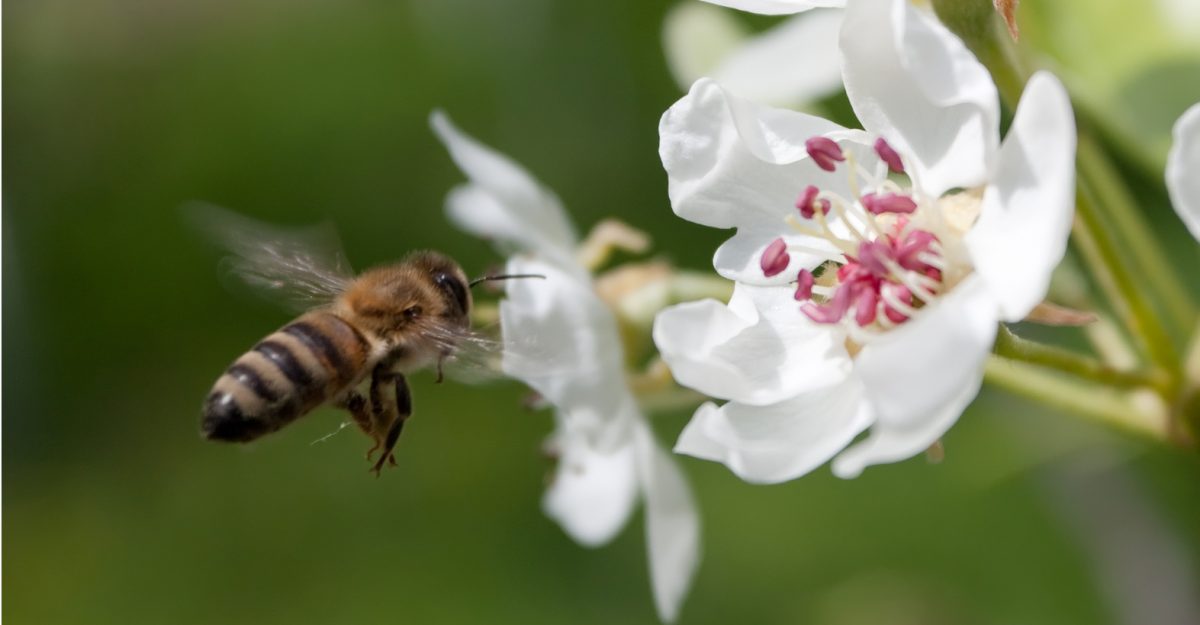We returned from the summer holiday break to find things have been quiet on the ag-hort science front in this country but ScienceDaily has been abuzz – so to speak – with news of research related to bees.
Among recent research findings are –
Shedding Light on the Secret Reproductive Lives of Honey Bees
Honey bee health has been on the decline for two decades, with US and Canadian beekeepers now losing about 25 to 40% of their colonies annually. And queen bees are failing faster than they have in the past in their ability to reproduce.
The reason has been a mystery, but researchers at North Carolina State University and the University of British Columbia are finding answers.
Their latest research, published January 8 in the journal Communications Biology, offers clues about what’s behind queen bee failure, finding that when sperm viability is low, the expression of a protein known to act against pathogens such as bacteria and viruses is high.
Pollinators Not Getting the ‘Buzz’ They Need in News Coverage
A dramatic decline in bees and other pollinating insects presents a threat to the global food supply, yet it’s getting little attention in mainstream news. That’s the conclusion of a study from researchers at the University of Illinois Urbana-Champaign, published in a special issue of the Proceedings of the National Academy of Sciences.
The study was based on a search of nearly 25 million news items from six prominent US and global news sources, among them The New York Times, The Washington Post and The Associated Press.
The study found “vanishingly low levels of attention to pollinator population topics” over several decades, even compared with what many would consider the limited coverage of climate change.
The study, titled “No buzz for bees,” was led by Scott Althaus, the director of the U. of I. Cline Center for Advanced Social Research, and May Berenbaum, a leading expert on pollinator declines, head of Illinois’ entomology department and one of three editors of the PNAS special issue.
The research utilised the Cline Center’s Global News Index, a unique database of millions of news items from thousands of global news sources, published over decades.
Study of Flowers With Two Types of Anthers Solves Mystery That Baffled Darwin
Most flowering plants depend on pollinators such as bees to transfer pollen from the male anthers of one flower to the female stigma of another flower, enabling fertilisation and the production of fruits and seeds.
Bee pollination, however, involves an inherent conflict of interest, because bees are only interested in pollen as a food source.
“The bee and the plant have different goals, so plants have evolved ways to optimise the behavior of bees to maximise the transfer of pollen between flowers,” explained Kathleen Kay, associate professor of ecology and evolutionary biology at UC Santa Cruz.
In a study published December 23 in Proceedings of the Royal Society B, Kay’s team described a pollination strategy involving flowers with two distinct sets of anthers that differ in color, size, and position. Darwin was mystified by such flowers, lamenting in a letter that he had “wasted enormous effort over them, and cannot yet get a glimpse of the meaning of the parts.”
Climate Change Reduces the Abundance and Diversity of Wild Bees
Wild bees are more affected by climate change than by disturbances to their habitats, according to a team of researchers led by Penn State. The findings suggest that addressing land-use issues alone will not be sufficient to protecting these important pollinators.
“Our study found that the most critical factor influencing wild bee abundance and species diversity was the weather, particularly temperature and precipitation,” said Christina Grozinger, Distinguished Professor of Entomology and director of the Center for Pollinator Research, Penn State.
“In the Northeastern United States, past trends and future predictions show a changing climate with warmer winters, more intense precipitation in winter and spring, and longer growing seasons with higher maximum temperatures. In almost all of our analyses, these conditions were associated with lower abundance of wild bees, suggesting that climate change poses a significant threat to wild bee communities.”
To conduct their study, the researchers analysed a 14-year United States Geological Survey data set of wild bee occurrences from more than 1,000 locations in Maryland, Delaware and Washington, D.C., specifically examining how different bee species and communities respond to land-use and climate factors.
Source: ScienceDaily












